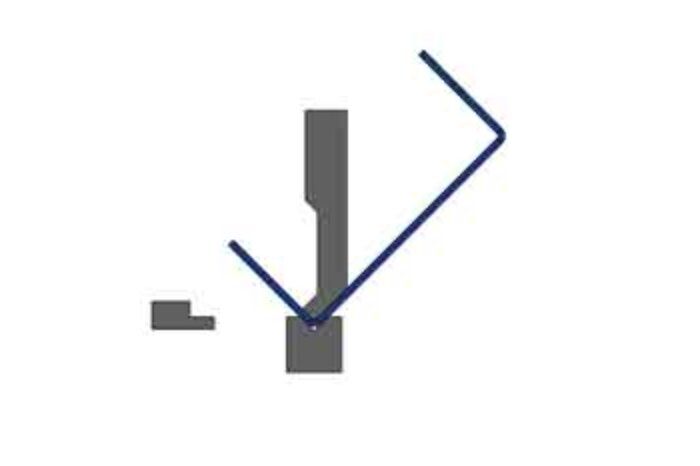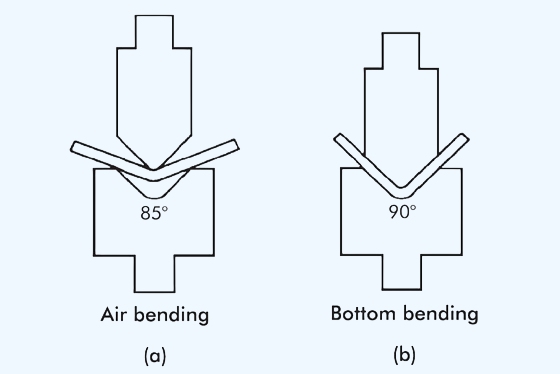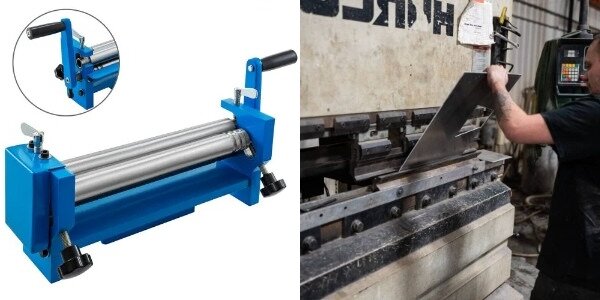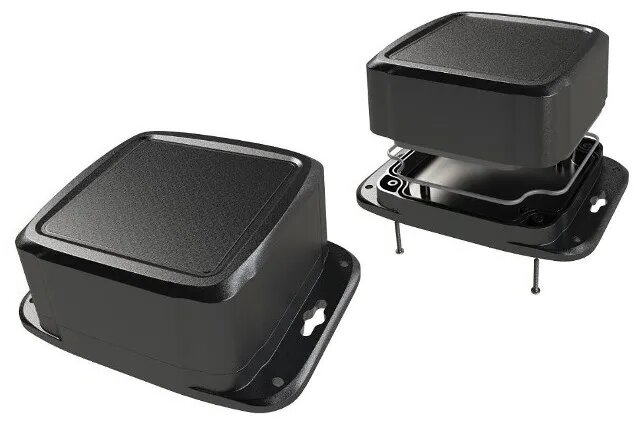Części metalowe są stale narażone na rdzę i korozję, co prowadzi do kosztownych wymian i konserwacji. Tradycyjne powłoki ochronne często okazują się niewystarczające, szybko się zużywając lub zapewniając niewystarczające pokrycie. Powłoka Dacromet rozwiązuje te wyzwania dzięki unikalnej formule cynkowo-aluminiowej, zapewniając doskonałą ochronę w różnych zastosowaniach przemysłowych.
Chcesz dowiedzieć się, w jaki sposób ta zaawansowana technologia powlekania może wydłużyć żywotność części i obniżyć długoterminowe koszty konserwacji? Przyjrzyjmy się szczegółom technicznym, korzyściom i najlepszym zastosowaniom powłoki Dacromet.
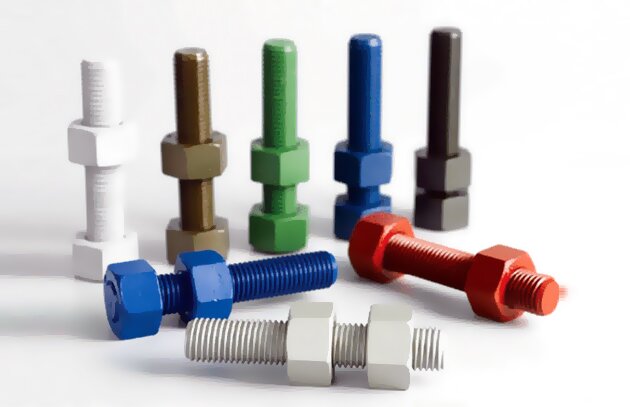
Co to jest powłoka Dacromet?
Powłoka Dacromet łączy płatki cynku, proszek aluminiowy i związki nieorganiczne w roztworze na bazie wody. Ten zaawansowany system powłokowy tworzy wielowarstwową barierę poprzez precyzyjny proces aplikacji zanurzeniowej, po którym następuje utwardzanie w wysokiej temperaturze.
Pomyśl o tym jak o budowaniu osłony dla metalowych powierzchni - ale takiej, która jest inteligentniejsza niż tradycyjne powłoki. Proces rozpoczyna się od zanurzenia części w mieszance powłokowej, obrócenia ich w celu zapewnienia równomiernego pokrycia, a następnie utwardzenia w temperaturze około 300°C. W ten sposób powstaje warstwa ochronna o grubości około 7-8 μm.
Cząsteczki cynku działają jak ofiarni strażnicy, przejmując uderzenie elementów korozyjnych przed dotarciem do metalu bazowego. W międzyczasie płatki aluminium tworzą fizyczną barierę, a nieorganiczne spoiwo blokuje wszystko na miejscu, jednocześnie kontrolując ofiarne działanie cynku.
Rodzaje powłok Dacromet
Różne zastosowania wymagają różnych poziomów ochrony i określonych właściwości użytkowych. Producenci oferują kilka wariantów powłok Dacromet, z których każdy został opracowany z myślą o konkretnych zastosowaniach i warunkach środowiskowych.
Lakier bazowy to podstawa, zawierająca płatki cynkowo-aluminiowe zmieszane ze specjalistycznymi spoiwami w celu stworzenia srebrnej warstwy ochronnej. Ta podstawowa formuła przygotowuje grunt pod bardziej wyspecjalizowane powłoki.
Oto podział głównych typów:
Seria Dacromet:
- 310/320: Idealny dla elementy złączne I źródłaprzy użyciu preparatu na bazie sześciowartościowego chromu
- 500: Posiada właściwości samosmarujące, idealne dla komponentów motoryzacyjnych i energii wiatrowej
Seria Geomet (bez chromu):
- 720: Stworzony z myślą o elementach złącznych i częściach samochodowych, wykorzystujący technologię opartą na krzemianach
- 321: Zapewnia niezawodną ochronę w zastosowaniach budowlanych i motoryzacyjnych
- 500: Posiada właściwości samosmarujące zmniejszające tarcie
- 320/360: Zawiera wyższą zawartość aluminium zapewniającą doskonałą odporność na ciepło, specjalnie zaprojektowaną do komponentów hamulcowych
Proces powlekania Dacromet
Przekształcanie surowych części metalowych w komponenty odporne na korozję wymaga precyzyjnej kontroli i specjalistycznego sprzętu. Udany proces powlekania wymaga starannego doboru materiałów, metod aplikacji i środków kontroli jakości.
Materiały stosowane w powłokach Dacromet
Wybór odpowiednich materiałów ma kluczowe znaczenie dla stworzenia skutecznej powłoki Dacromet. Każdy komponent odgrywa określoną rolę w końcowej warstwie ochronnej.
Podstawowe materiały obejmują:
- Płatki cynku: Podstawowy inhibitor korozji
- Proszek aluminiowy: poprawia właściwości barierowe
- Spoiwa nieorganiczne: Blokują cząsteczki metalu w miejscu
- Specjalistyczne dodatki: Kontrola lepkości i przepływu
- Nośniki na bazie wody: Umożliwiają równomierną dystrybucję
Proces nakładania powłoki Dacromet krok po kroku
Proces powlekania przebiega w ściśle określonej kolejności:
Przygotowanie powierzchni
- Dokładnie wyczyść części, aby usunąć oleje i zanieczyszczenia
- Obróbka strumieniowo-ścierna lub chemiczna powierzchni w celu uzyskania optymalnej przyczepności
- Kontrola części pod kątem czystości i profilu powierzchni
Aplikacja powłoki
- Zanurzyć części w roztworze Dacromet
- Wiruj z kontrolowaną prędkością, aby zapewnić równomierne pokrycie
- Umożliwić wstępne suszenie powietrzem w kontrolowanych warunkach
Proces utwardzania
- Podgrzać części do około 300°C
- Utrzymywanie temperatury przez określony czas
- Chłodzenie w kontrolowanych warunkach
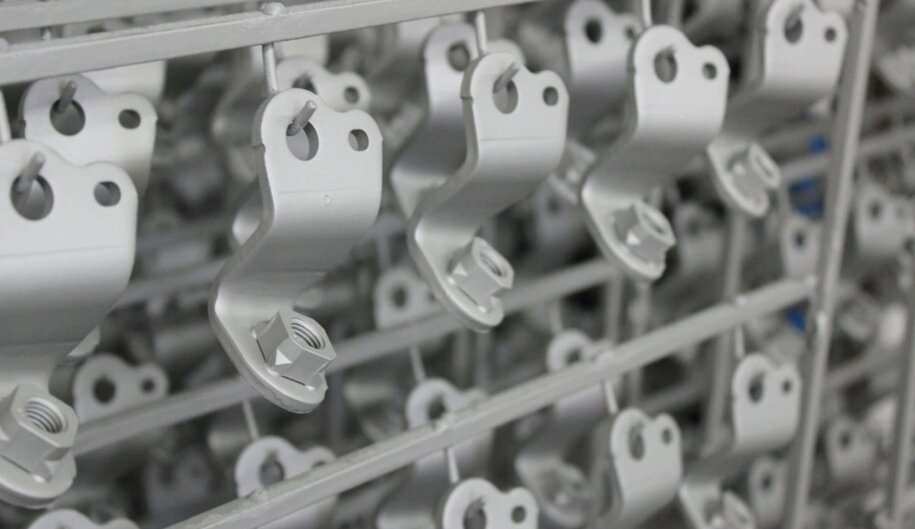
Zalety powłoki Dacromet
Technologia ochrony metalu wciąż ewoluuje, a powłoka Dacromet wyróżnia się wszechstronnymi zaletami. W tej sekcji omówiono kluczowe zalety, które sprawiają, że Dacromet jest preferowanym wyborem do ochrony metali w różnych branżach.
Zwiększona odporność na korozję
Powłoka Dacromet tworzy wiele barier przed czynnikami korozyjnymi dzięki swojej unikalnej strukturze warstwowej. Płatki cynkowo-aluminiowe tworzą nieprzeniknioną osłonę, która blokuje przenikanie wilgoci, soli i substancji chemicznych.
Najważniejsze funkcje ochrony:
- Wytrzymuje ponad 1000 godzin testów w mgle solnej
- Zapobiega powstawaniu czerwonej rdzy
- Odporność na działanie substancji chemicznych w warunkach przemysłowych
Zwiększona trwałość i długowieczność
Wielowarstwowa struktura powłoki Dacromet znacznie wydłuża żywotność komponentów. Trwałość ta przekłada się na mniejszą częstotliwość wymiany i niższe koszty konserwacji.
Wskaźniki wydajności:
- Ponad 20 lat żywotności w normalnych warunkach
- Wysoka odporność na zużycie
- Silna przyczepność do metali nieszlachetnych
Odporność na wysokie temperatury
Dacromet zachowuje swoje właściwości ochronne w szerokim zakresie temperatur. Ta stabilność termiczna sprawia, że nadaje się do komponentów narażonych na cykle termiczne.
Wydajność temperaturowa:
- Stabilność do 300°C (572°F)
- Nie mięknie ani nie pęka pod wpływem ciepła
- Utrzymuje przyczepność podczas wahań temperatury
Przyjazne dla środowiska aspekty powłoki Dacromet
Proces powlekania jest zgodny z nowoczesnymi standardami ochrony środowiska. Formuła na bazie wody i metody produkcji zmniejszają wpływ na środowisko.
Zielone korzyści:
- Zerowa emisja lotnych związków organicznych
- Zgodność z REACH i RoHS
- Części powlekane nadające się do recyklingu
Niskie wymagania konserwacyjne
Po nałożeniu powłoka Dacromet wymaga minimalnej konserwacji. Właściwości samoregenerujące cynku zapewniają stałą ochronę bez konieczności regularnej konserwacji.
Zalety związane z konserwacją:
- Nie jest wymagane okresowe ponowne malowanie
- Samonaprawiające się drobne zadrapania
- Utrzymuje wygląd przez długi czas
Wady powłoki Dacromet
Ograniczona estetyka
Powłoka tworzy szare, matowe wykończenie, które może nie pasować do wszystkich zastosowań. W porównaniu do innych rodzajów powłok, opcje kolorystyczne pozostają ograniczone.
Podatność na uszkodzenia mechaniczne
Pomimo swoich właściwości ochronnych, powłoka Dacromet może zostać uszkodzona w wyniku silnego uderzenia lub ścierania. Ostre przedmioty lub duże obciążenia również mogą naruszyć integralność powłoki.
Dłuższy czas utwardzania w porównaniu do innych powłok
Proces aplikacji wielowarstwowej wymaga określonych warunków i czasu utwardzania. Wydłuża to harmonogram produkcji w porównaniu z prostszymi metodami powlekania.
Potencjał niespójnej grubości powłoki
Technika aplikacji wpływa na jednorodność powłoki. Złożona geometria części może skutkować różnicami grubości, które wpływają na poziom ochrony.
Wyższy początkowy koszt aplikacji
Specjalistyczny sprzęt i kontrola procesu potrzebne do powlekania Dacromet skutkują wyższymi kosztami początkowymi. Ta początkowa inwestycja musi być zestawiona z długoterminowymi korzyściami.
Zastosowania powłoki Dacromet
Powłoka Dacromet jest stosowana w wielu branżach, w których ochrona metalu przed trudnymi warunkami środowiskowymi ma kluczowe znaczenie. To wszechstronne rozwiązanie w zakresie powłok spełnia określone wymagania dotyczące wydajności w różnych sektorach, od motoryzacyjnego po morski.
Zastosowania w przemyśle motoryzacyjnym
Sektor motoryzacyjny w dużym stopniu polega na powłoce Dacromet w celu ochrony krytycznych komponentów przed solą drogową, wilgocią i wpływem środowiska. Powłoka ta pomaga producentom spełniać rygorystyczne normy trwałości, jednocześnie zmniejszając liczbę roszczeń gwarancyjnych.
Typowe zastosowania motoryzacyjne:
- Elementy układu hamulcowego
- Części zawieszenia
- Elementy mocujące podwozia
- Wsporniki montażowe silnika
- Elementy układu paliwowego
Zastosowania lotnicze i wojskowe
W zastosowaniach lotniczych i obronnych powłoka Dacromet spełnia rygorystyczne specyfikacje wydajności. Powłoka chroni komponenty narażone na ekstremalne warunki i zmienny klimat.
Kluczowe zastosowania wojskowe i lotnicze:
- Łączniki konstrukcyjne
- Elementy podwozia
- Sprzęt zewnętrzny
- Sprzęt wsparcia naziemnego
- Wsporniki montażowe
Projekty budowlane i infrastrukturalne
Branża budowlana ceni powłokę Dacromet za długotrwałą ochronę elementów konstrukcyjnych. Powłoka ta pomaga wydłużyć żywotność infrastruktury w trudnych warunkach.
Zastosowania konstrukcyjne obejmują:
- Elementy mostka
- Barierki ochronne na autostradach
- Łączniki budowlane
- Struktury wsparcia
- Złącza kompensacyjne
Zastosowania morskie
Środowiska morskie wymagają doskonałej ochrony przed korozją. Powłoka Dacromet zapewnia doskonałą odporność na mgłę solną i stałą ekspozycję na wilgoć.
Sektor morski wykorzystuje:
- Okucia pokładowe
- Wyposażenie portowe
- Platformy offshore
- Wyposażenie statków
- Komponenty kontenera
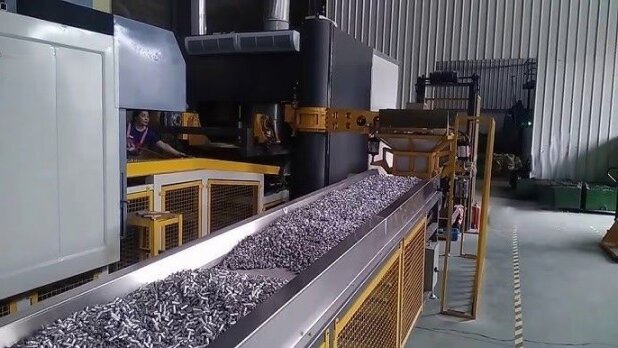
Powłoka Dacromet vs. Cynkowanie
Dokonanie właściwego wyboru między opcjami powlekania wpływa zarówno na wydajność, jak i koszty. To porównanie pomaga decydentom wybrać najbardziej odpowiednie rozwiązanie dla ich konkretnych potrzeb.
Krytyczne różnice w odporności na korozję
Obie metody powlekania zapewniają różne poziomy ochrony przed środowiskiem korozyjnym. Testy wykazały wyraźne różnice w wydajności w trudnych warunkach.
Porównanie odporności na korozję:
- Dacromet: Ponad 1 000 godzin odporności na mgłę solną
- Cynkowanie galwaniczne: 200-300 godzin odporności na mgłę solną
Mechanizmy ochrony:
- Dacromet tworzy wiele warstw barierowych
- Cynkowanie polega na ochronie protektorowej
- Ryzyko ekspozycji na metale nieszlachetne znacznie się różni
Efektywność kosztowa
Koszty początkowe i wartość długoterminowa przedstawiają różne scenariusze ekonomiczne dla każdego typu powłoki. Dokładna analiza ujawnia rzeczywisty wpływ na koszty w czasie.
Czynniki kosztowe do rozważenia:
Dacromet:
- Wyższa inwestycja początkowa
- Niższe koszty utrzymania
- Wydłużona żywotność
Cynkowanie galwaniczne:
- Niższe koszty początkowe
- Konieczne jest częstsze ponowne malowanie
- Wyższe wydatki długoterminowe
Porównanie trwałości i wydajności
Rzeczywista wydajność różni się znacząco pomiędzy tymi opcjami powłok. Warunki środowiskowe i wymagania dotyczące aplikacji wpływają na trwałość powłoki.
Wskaźniki wydajności:
Odporność na temperaturę:
- Dacromet: Do 300°C
- Cynkowanie galwaniczne: Do 120°C
Konsystencja grubości:
- Dacromet: Równomierny zasięg
- Cynkowanie galwaniczne: Zmienne narastanie
Odporność na uderzenia:
- Dacromet: Umiarkowana elastyczność
- Cynkowanie galwaniczne: Bardziej kruchy
Odporność chemiczna:
- Dacromet: Wysoka odporność
- Cynkowanie galwaniczne: Umiarkowana odporność
Wnioski
Powłoka Dacromet udowadnia swoją wartość dzięki doskonałej ochronie przed korozją i długoterminowym korzyściom finansowym. Chociaż początkowa inwestycja może być wyższa, wydłużona żywotność i ograniczona konserwacja sprawiają, że jest to mądry wybór dla wymagających zastosowań. Zgodność powłoki ze środowiskiem i udokumentowane doświadczenie w różnych branżach sprawiają, że jest to niezawodne rozwiązanie dla nowoczesnych wyzwań produkcyjnych.
Oprócz powlekania Dacromet, oferujemy kompleksowe rozwiązania produkcyjne dostosowane do wszystkich Twoich potrzeb. Dzięki zaawansowanemu sprzętowi i profesjonalnemu zespołowi technicznemu możemy spełnić różnorodne wymagania w zakresie Obróbka CNC, produkcja blachi nie tylko. Wybierz nas, aby uczynić swój proces produkcyjny bardziej wydajnym i płynnym.
Często zadawane pytania
Jak długo działa powłoka Dacromet?
W normalnych warunkach powłoka Dacromet wytrzymuje zwykle 20-25 lat. Rzeczywista żywotność zależy od ekspozycji środowiskowej i warunków aplikacji. Regularne kontrole pomagają monitorować wydajność powłoki w czasie.
Czy powłokę Dacromet można nakładać na wszystkie materiały?
Powłoka Dacromet działa najlepiej na podłożach stalowych i żelaznych. Chociaż może być stosowana na innych metalach, proces powlekania wymaga określonych warunków powierzchniowych i metod przygotowania w celu zapewnienia właściwej przyczepności.
Czy powłoka Dacromet jest bezpieczna dla środowiska?
Formuła na bazie wody nie zawiera metali ciężkich ani szkodliwych rozpuszczalników. Powłoka Dacromet spełnia obowiązujące na całym świecie przepisy dotyczące ochrony środowiska, w tym normy REACH i RoHS. Proces wytwarza minimalną ilość odpadów i emisji.
Czy Dacromet zawiera sześciowartościowy chrom?
Nie, powłoka Dacromet nie zawiera sześciowartościowego chromu. Zamiast tego wykorzystuje trójwartościowe związki chromu, dzięki czemu jest zgodna z nowoczesnymi normami ochrony środowiska i bezpieczeństwa.
Jak gruba jest powłoka Dacromet?
Standardowa grubość powłoki Dacromet wynosi od 5 do 15 mikronów. Dokładna grubość zależy od wymagań aplikacji i określonego poziomu jakości. Środki kontroli jakości zapewniają stałą grubość powłoki na wszystkich częściach.
Hej, jestem Kevin Lee

Przez ostatnie 10 lat byłem zanurzony w różnych formach produkcji blach, dzieląc się tutaj fajnymi spostrzeżeniami z moich doświadczeń w różnych warsztatach.
Skontaktuj się z nami

Kevin Lee
Mam ponad dziesięcioletnie doświadczenie zawodowe w produkcji blach, specjalizując się w cięciu laserowym, gięciu, spawaniu i technikach obróbki powierzchni. Jako dyrektor techniczny w Shengen, jestem zaangażowany w rozwiązywanie złożonych wyzwań produkcyjnych i napędzanie innowacji i jakości w każdym projekcie.

